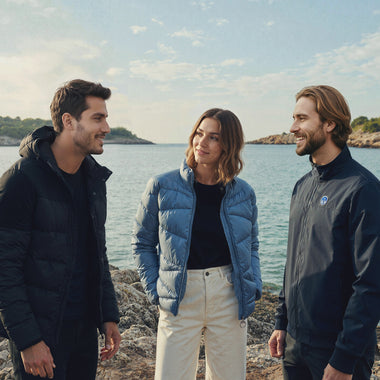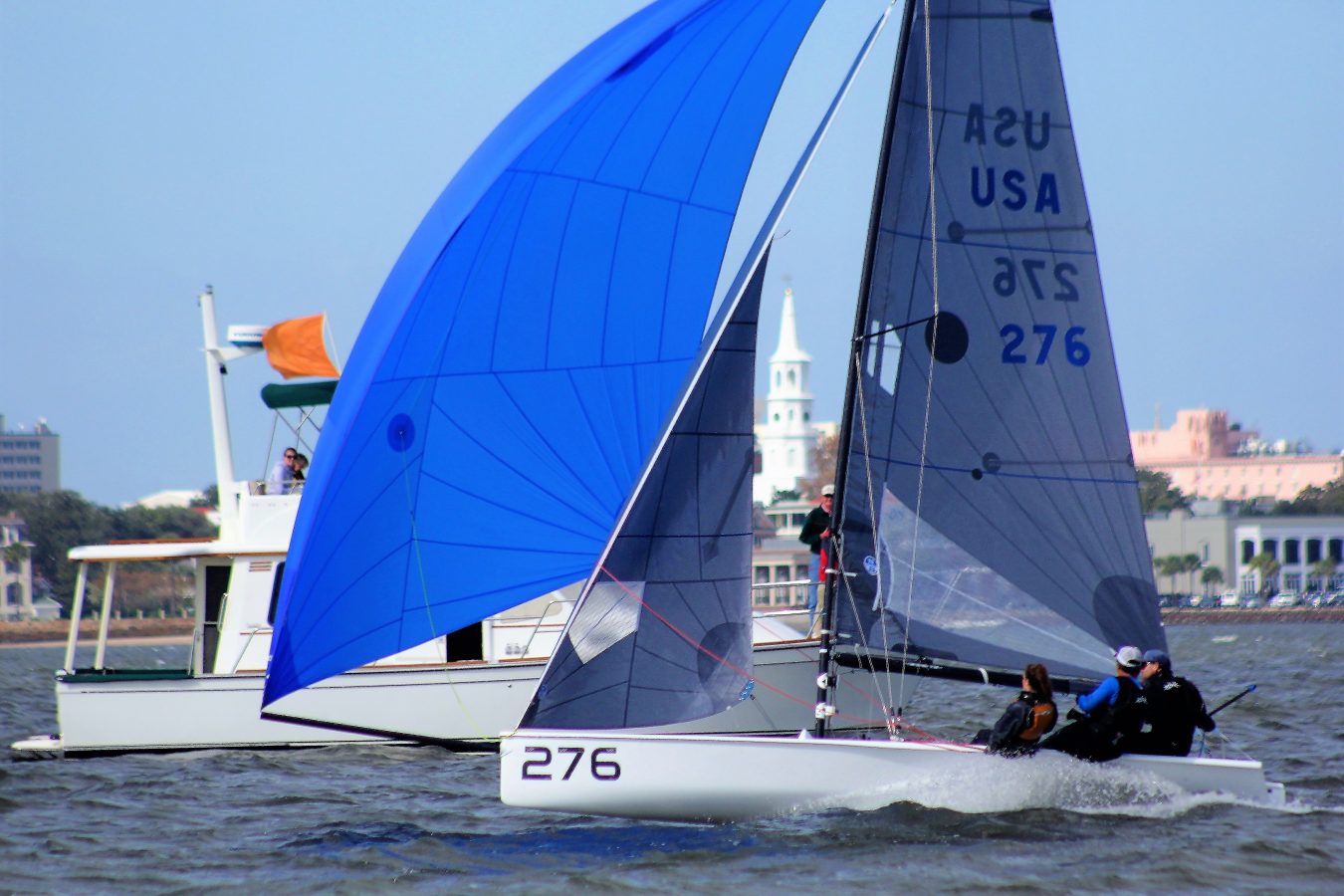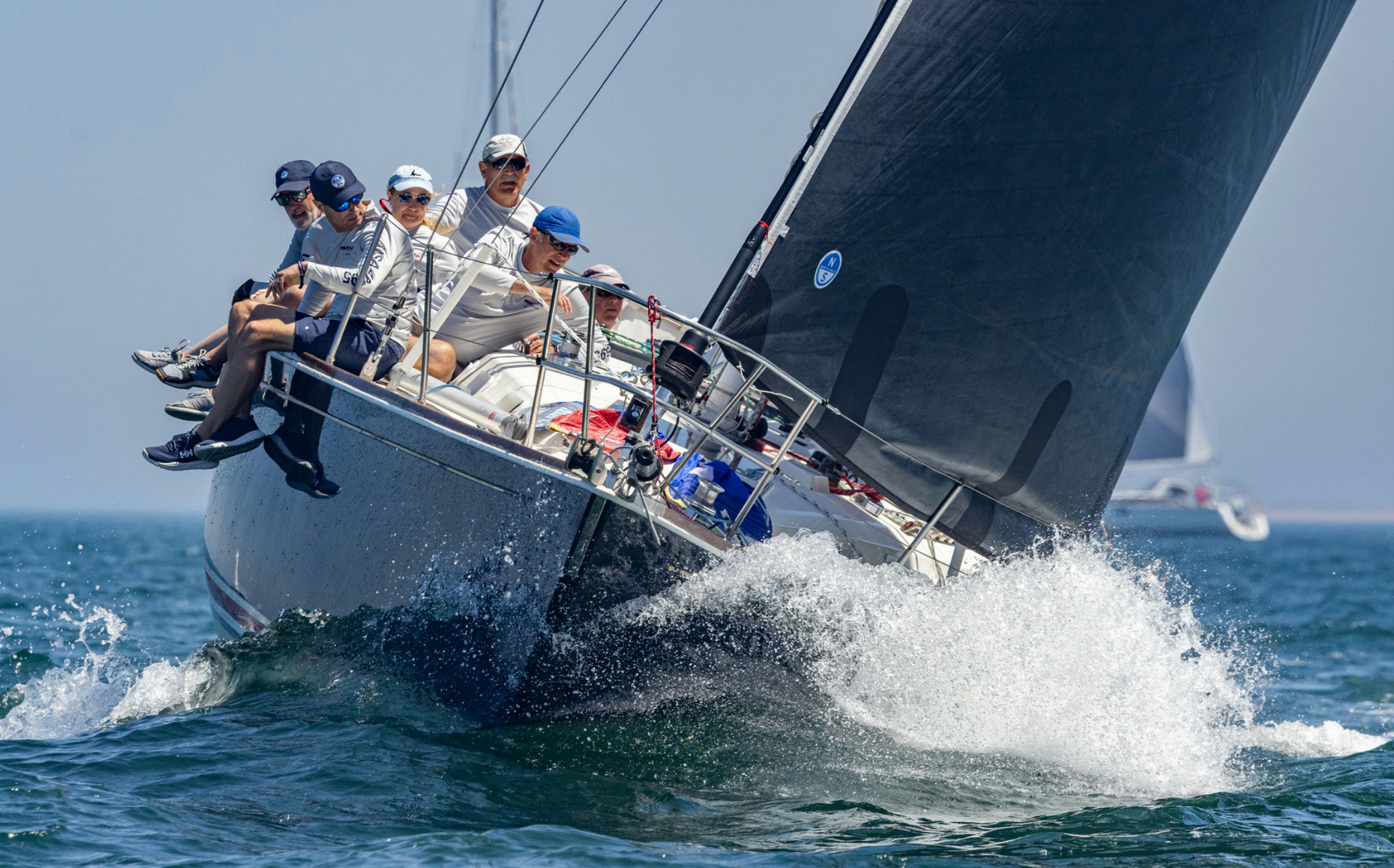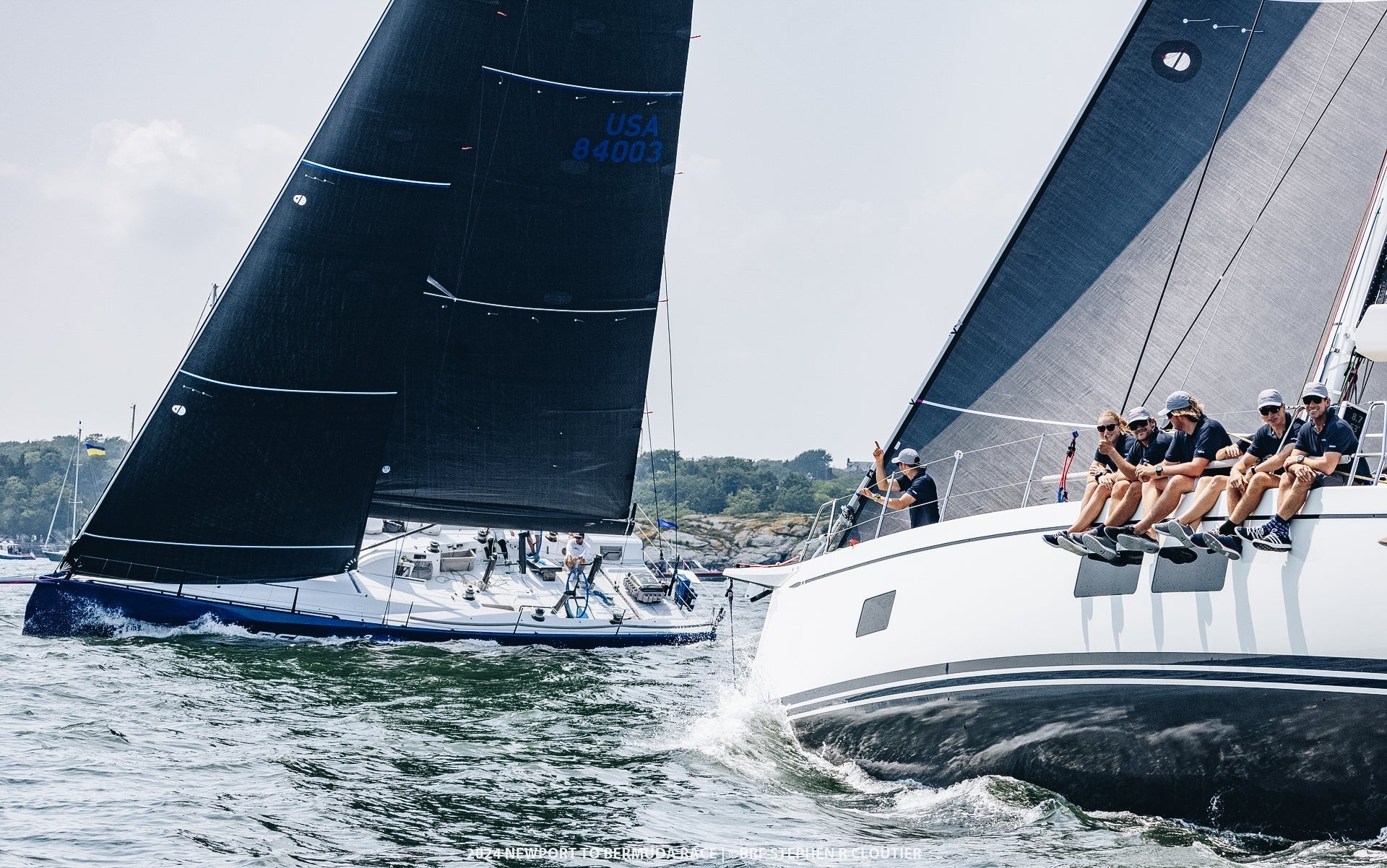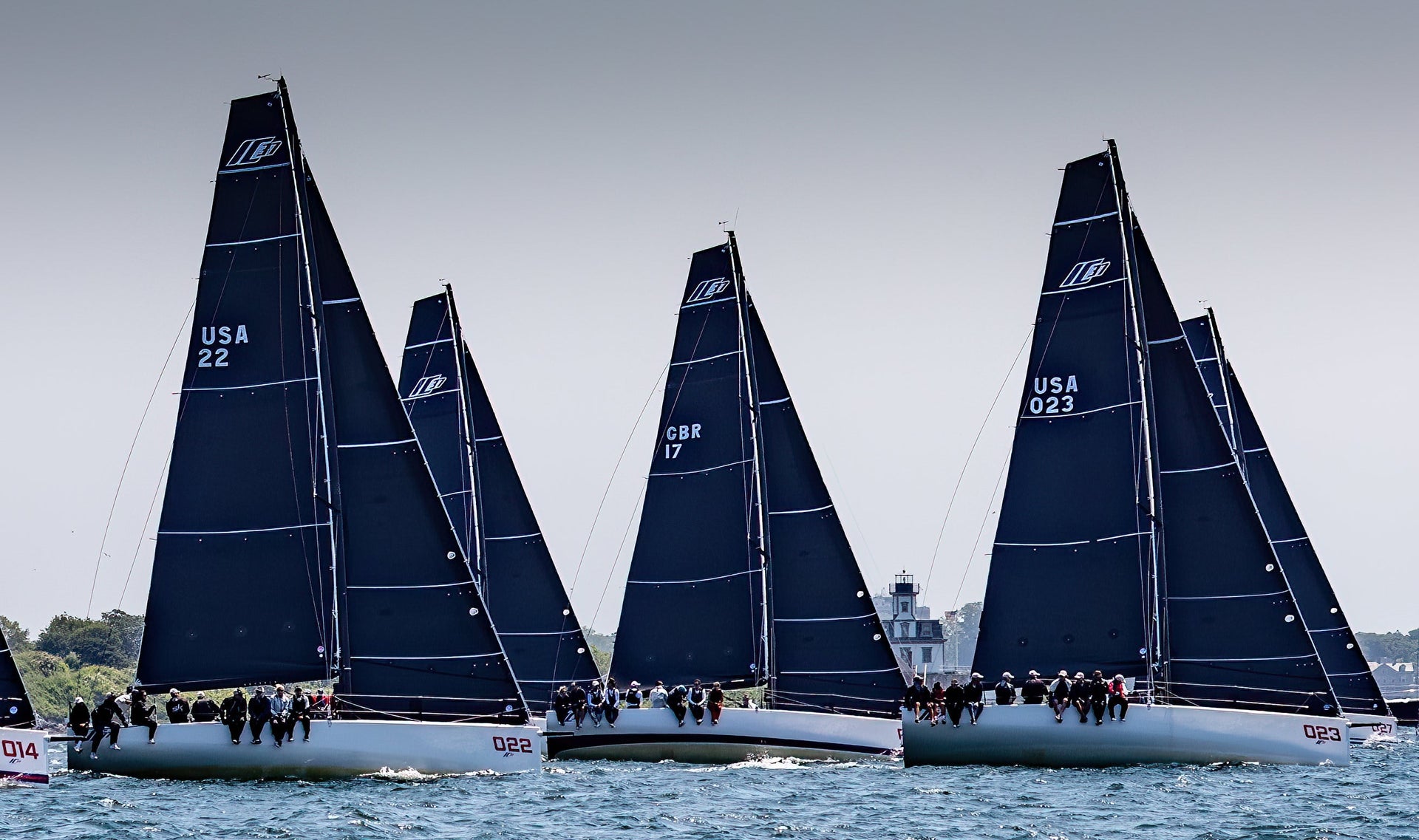VX ONE NORTH AMERICANS: FAST, FUN & FIERCE
VX ONE NORTH AMERICANS: FAST, FUN & FIERCE
Interview: Making the VX One Go Fast

Charleston delivered excellent VX One sailing conditions for the North American Championship the first weekend of November. Strong breeze, flat water, and of course a little bit of that Charleston current. The southern hospitality offered from the Carolina Yacht Club put an exclamation point on the event.
The VX One has been gaining traction as a class over the last few years, and this year’s North American Championship proved to be the deepest field of competitors yet. Racing was fast, fun, and fierce with boats reaching 20 knots of boat speed in the strongest puffs. The sheer fun had by sailing these boats might just outweigh the stiff competition.
We caught up with the winners of the event: Chris Alexander, John Bowden, and Caroline Main, as well as North Sails designer Mike Marshall and class president Jeff Eiber (sailing together, finishing 2nd) to learn what makes a VX One go fast and what the class is all about.
Interview by Jackson Benvenutti
John, this was your first regatta in the VX One. What was your basis for the winning rig tune? Any specific ratios between the uppers, lowers, and check stays?
I didn’t have a good idea of the ratios as first, and I was interested in working to help create a new tuning guide, so we were trying a few different things out (be on the lookout for that new tuning guide soon!). Most importantly, I was trying to induce headstay tension with the lowers and the vang.
A good way to think about it is that the boat is always either looking for power, or needing to de-power, which is fully controlled by headstay tension and de-powering the jib. De-powering the main was fairly easy, but de-powering the jib proved to be a little more complicated without affecting the mainsail shape.
There is always a debate in the VX One class about team weight and sailing with two or three people. Chris, your team sailed with three people. What was your total team weight and what are your thoughts about sailing with three people? Would you consider always sailing the boat at that weight, and with three people?
I am fairly small so I have sailed most big events with three. We were approximately 435 lb total and I believe that it was a very good all around weight for the regatta and the varying conditions we saw. I would say we were perfect weight on day one (10-16 knots), about 40-60 heavy on day two (6-12 knots), and 40-60 light on day three (15-20 knots).
Sailing with three can get a little crowded but you have an extra set of eyes and hands. Caroline did a great job of expediting tuning adjustments at mark roundings, trimming jib downwind, and moving weight where it was needed.

Chris, you’ve been sailing the VX One for a few years now, this was John’s first regatta ever in the boat and Mike’s second regatta in the VX. Can each of you speak a little bit about your experiences with the boat and the class?
Chris – This was my fifth North Americans and I have had an absolute blast owning this boat. The design of the boat is superb—the construction of hull, rig, and sails are of robustness and high quality—and the people of the class have become family. It’s a hard sell to get me to sail other boats now, because this one is just so good!
John – The boat is great, super responsive, it can change gears quickly and is fun to sail. I’m looking forward to seeing how the class develops and grows.
Mike – So far, I have spent 5 days in the boat and frankly, I have loved every minute of it. The boat is a blast to sail both upwind and downwind and I look forward to seeing more people start sailing them. The class is still in its beginning stages, but the key points about everyone having fun while keeping the racing at a very high level are there. As I have said in the past, the boats reward people that sail them flat and fast, so the sooner that you can achieve that mode, the better you are going to do in the race.
It isn’t very often that you find a boat that makes you come off the water grinning ear to ear about how fun the sailing was. I don’t think I will ever forget ripping downwind in the last race right next to Chris’ boat thinking about how awesome the boat was and how great that photo opportunity was for the class!
Chris, this is your second time winning the NAs, can you tell us two main things that are particular to the VX One, both upwind and downwind, that you focus on to make sure your VX One is sailing fast?
The times in the past where I haven’t felt fast have been due to rig tune or weight. These boats have a flat bottom and little rocker, which makes them accelerate quickly and be weight sensitive. Tuning to your weight, and how the boat feels that day becomes very important. I had very little experience with the technical rigging aspects of what makes a sport boat like the VX One go fast when I bought the boat, but have been enjoying the learning process.
UPWIND – Caps and Intermediate shrouds are the ‘gross’ rig adjustments and should be VERY high on the mental priority list pre-start since they can not be adjusted after. After the start we made constant adjustments to vang and main sheet, and very little movement on the jib. John was trimming the main and would tell me if we were fully trimmed or eased, and I would relay back how much vang tension, from 0-100%.
John was relentless on playing the main and focusing on how much power we were putting into the boat. My hand never left the vang line, and would adjust on nearly every puff. John probably made 1-4 adjustments on the jib halyard each windward leg was well. The short fetch caused such puffy conditions we were going through quite a lot of gear changes. John was also very adamant about not pinching and I feel that combined with quick gear changes got us through the ever changing breeze faster than the rest.
DOWNWIND – Weight and kinetics were probably the two biggest factors of straight line speed. We were very dynamic and highly focused on what mode we were in. Body weight was generally moving diagonally across the boat, either low and forward, or up and back. We sailed “normal,” as John would say, but focused on the minutia of our execution to go fast.

Mike, you obviously are an excellent sailor and sail designer. What was your biggest take away from this regatta in regards to sailing the VX One?
My biggest takeaway was that you absolutely must get the boat going fast. In any condition, you have to focus on speed. Once you are going fast, then worry about getting height upwind, and going the right direction.
To get that speed:
HEAVY AIR: I was easing the main out 4 feet at times in the overpowered conditions, and dropping the jib car down on the track to keep the jib from luffing the eased main.
LIGHT AIR: In the lighter conditions, I was keeping the jib telltales flying straight all the time to keep moving fast.
DOWNWIND: Downwind I was always trying to push the boat as low as possible as long as I was going the same speed or faster than everyone else.
KEEP BOAT FLAT: I was focused on keeping the boat flat. Six degrees of heel is what I heard was optimal. That, while sailing, feels like the boat is about to capsize to windward on you. But when you heel over, the boat pivots on the leeward buoyant edge that is way away from the centerline. This means that not only does the keel get shorter from the rotation, but also from the boat lifting out of the water. It is a double negative. Sailing the boat flat is fast and staying fast is the key in my mind.
Jeff, you’ve been sailing VX Ones now for a few years and you are the class president. How do you see the class evolving and what kind of people do you think would enjoy racing in the VX One class?
Over the years I have seen a spectrum of teams returning to the dock with big smiles after sailing and racing a VX One: junior sailors, collegiate sailors, Olympians, couples, moms and dads with young and grown kids, women’s teams, grey haired old guys… The one common thread tying these groups together is a modest level of fitness. The boat is not overly physical, especially offwind, but rewards a willingness to hike upwind and a sensitivity to speed and balance.
At the same time the boat is very forgiving to errors. Wipeouts and capsizes result in the boat coming to a stop while the 68 kg (150 lb) lead bulb on the keel prevents turtling. The open transom means no bailing. These features make the boat a fantastic learning platform for beginning and intermediate sailors.
Boats and fleets are spreading worldwide. There are boats in Canada, Great Britain, France, Germany, Switzerland, Hong Kong, Chile, Australia, New Zealand, United States. The next step for the class is to pull these owners together into a truly international class.
Another step in our evolution is to settle on the best setup for the boat. The way we sail the boats in North America is in the slowest configuration: fractional kite, no trapeze and with the lead bulb. But the boat is engineered to have a masthead kite, trapeze and no bulb…can’t wait to try that setup! Or maybe we develop racing for both configurations.
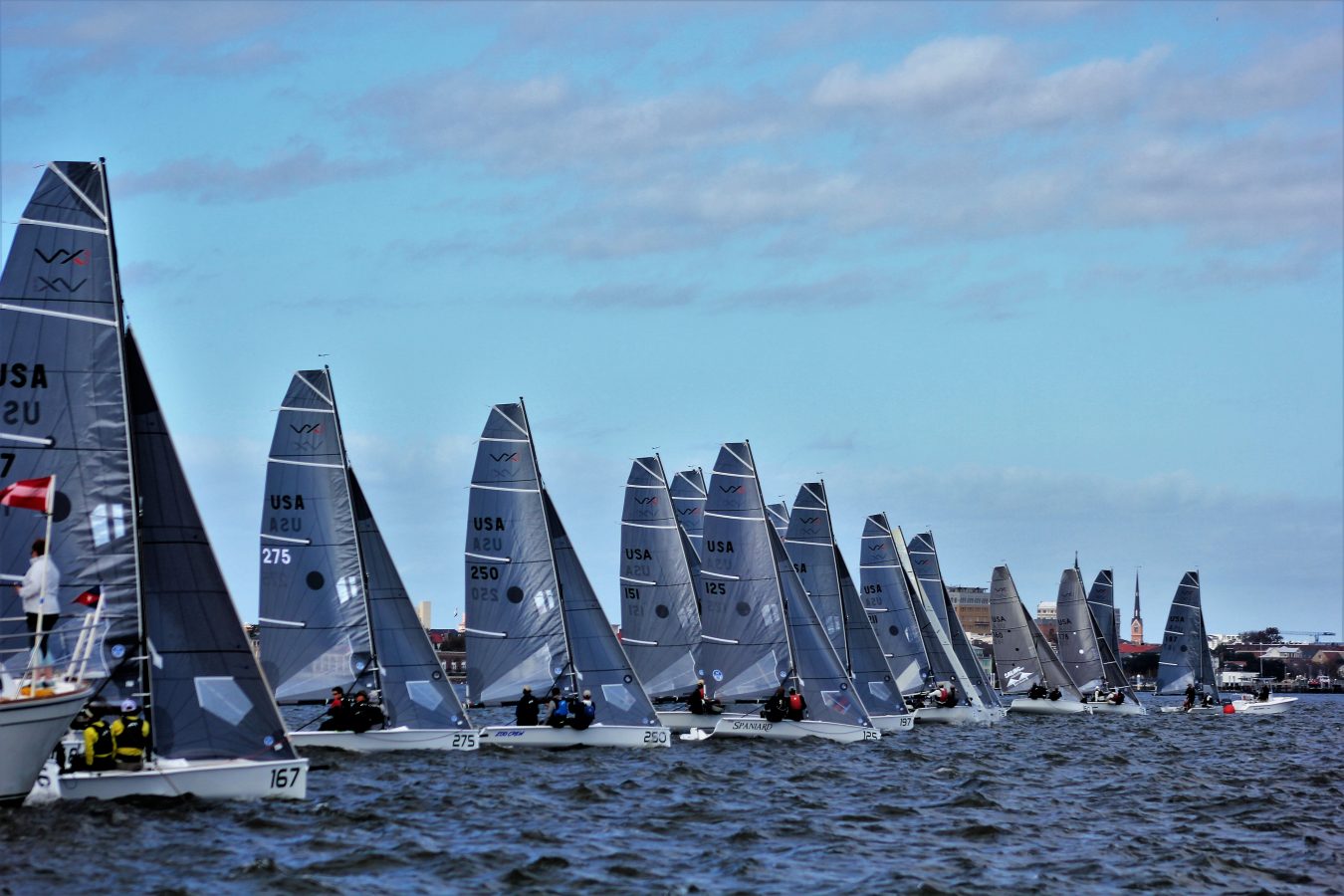
| 2018 Vx One North Americans | ||
| 1 | Christopher Alexander | |
| 2 | Mike Marshall | |
| 3 | Lawrence Frost | |
| 4 | John Potter David | |
| 5 | Jerry Callahan | |
| 6 | Sam Padnos | |
| 8 | Rob Doolittle * | |
| 9 | William Curtiss | |
| 10 | Paul Murphy | |
| * Denotes Partial North Sails Inventory | ||
